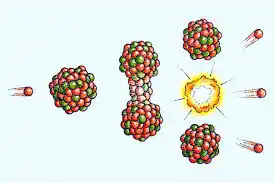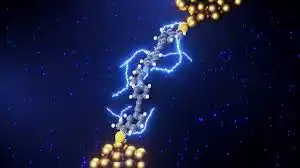افشین رشید
اُستادیار ؛ عضو هیات علمی دانشگاه آزاد اسلامی واحد علوم و تحقیقات تهران
615 یادداشت منتشر شدهThe Density of Uranium ۶۵% is Greatly Affected by Cold Water and (Suitable for Generating Electrical Energy or Nuclear Power)

Note: The density of uranium is 65% greater than that of lead . If uranium is well separated, it is strongly affected by cold water and oxidizes in air. Uranium extracted from mines can be chemically converted into uranium dioxide and other industrially usable forms.
The use of particles from the micro to nanoscale provides advantages for various scientific fields, but since a large percentage of their atoms are located on the surface, nanomaterials can react very much and pose potential risks to humans. Nanoparticles are of great interest both in industry and in the natural sciences due to their wide application. While natural materials have constant physical properties regardless of size, the size of a nanoparticle determines its physical and chemical properties. Therefore, the properties of a material change as its size approaches the nanoscale and the percentage of atoms on the surface of the material becomes significant. An important feature of all nanostructures is that the number of surface atoms in them is greater than the number of bulk atoms. This ratio increases with decreasing nanoparticle size. Therefore, the size of the nanoparticle is its important feature. The range of change in the activity of nanoparticles depends on the nature and shape of the nanostructure. However , if the energy of the nanoparticle field is comparable to the energy of electromagnetic radiation and if significant changes occur in the irradiated material within a certain wavelength range due to chemical reactions, the activity of nanoparticles up to 100 nm will be significant.

The surface atoms of the nanoparticles are not compensated in terms of energy. In general, the results of the energy growth of the nanoparticles can be expressed as the total energy of the atoms on the surface of the particle. The freedom of movement of the atoms on the surface of the nanostructures is limited, and only vibrational movements and electron motion are possible. These two electrokinetic reactions are interdependent because the displacement of the electron clouds of the atoms necessarily changes the vibrational frequencies of the bonds of the nanoparticles' atoms . On the other hand, the change in the location of the valence electrons in the bonds changes the polarity of the bond and the objects called the supermolecule. In this case, the electron transfer to a higher energy level becomes possible.
Conclusion :
Uranium extracted from mines can be chemically converted into uranium dioxide and other industrially usable species. The use of particles from the micro to nanoscale provides advantages for various scientific fields, but because a large percentage of their atoms are on the surface, nanomaterials can be highly reactive and pose potential hazards to humans. Nanoparticles are of great interest in both industry and the natural sciences due to their wide range of applications. While natural materials have constant physical properties regardless of size, the size of a nanoparticle determines its physical and chemical properties.